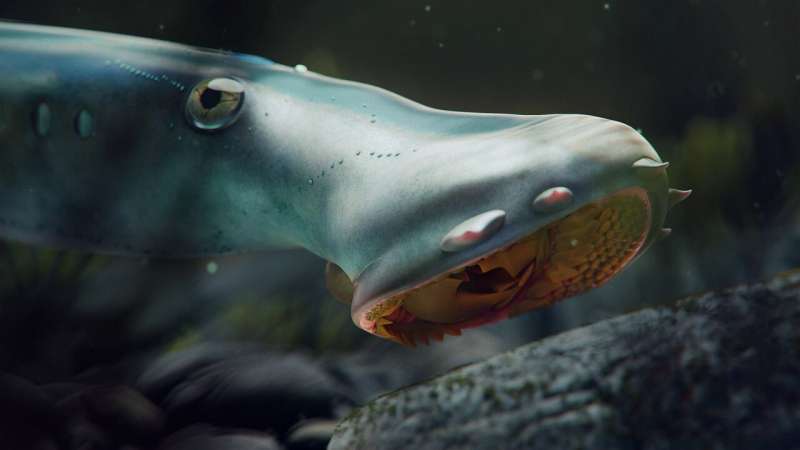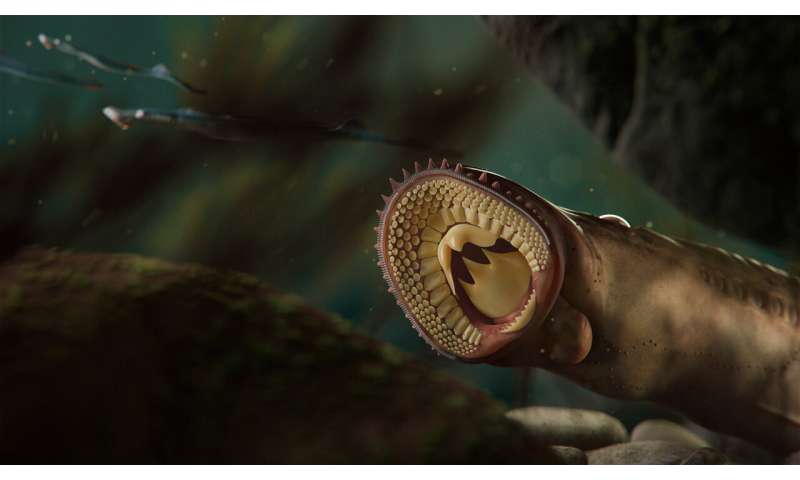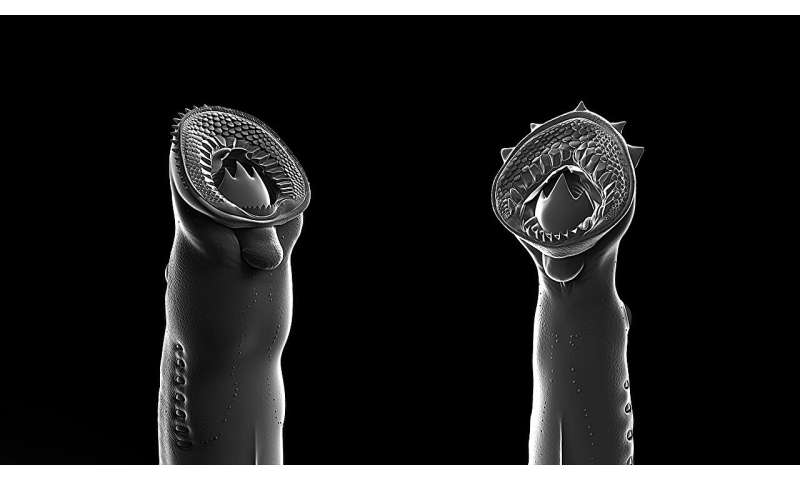November 1, 2023 report
This article has been reviewed according to Science X's editorial process and policies. Editors have highlighted the following attributes while ensuring the content's credibility:
fact-checked
peer-reviewed publication
trusted source
proofread
Two species of large ancient lampreys found in China

A trio of paleontologists, two with the Chinese Academy of Sciences and the third with Muséum national d'Histoire naturelle, UMR, has found the fossilized remains of two large lamprey species from the Jurassic in northeast China. In their paper published in the journal Nature Communications, Feixiang Wu, Philippe Janvier and Chi Zhang describe the site where the fossils were found, their condition, and features of the ancient lampreys.
Prior research has shown that lampreys—eel-like, jawless, aquatic vertebrates with sucker-like mouths—first evolved approximately 360 million years ago. They still exist today in many of the world's oceans and some fresh-water environments. During their early development, they were small, only a few centimeters long. Over time, they have grown much larger—some modern species grow to over a meter long.
Little is known about the evolutionary history of the creatures due to the rarity of fossil finds. In this new study, the researchers found two fossils representing two species that date back approximately 160 million years—a find that helps to fill in some gaps in the lamprey's history.
The two fossils were found in the Yanliao Biota, a rock formation that has yielded multiple fossils of ancient creatures. Prior research has shown that the rock formations in which the two new fossils were found were formed approximately 160 years ago, revealing the age of the fossilized lampreys. Both specimens were described as being in excellent condition, allowing the researchers to study the creatures from head to tail.
-

The Jurassic lampreys Yanliaomyzon with feeding apparatus that surprisingly resembles that of the pouched lampreys, foreshadows the ancestral flesh-eating habit of living lampreys. Credit: Heming Zhang -

These Jurassic lampreys have the most powerful "biting structures" among known fossil lampreys and suggest an ancestral flesh-eating habit of living lampreys. Credit: Heming Zhang
The longer of the two specimens has been named Yanliaomyzon occisor—it was approximately 58 centimeters long. The shorter of the two, named Yanliaomyzon ingensdentes, was approximately 28 centimeters. Both have a large number of teeth—the longer fossil has 16, and the shorter has 23. The researchers note that the mouth structures and teeth, along with the structure that held the tongue, suggested that both species latched onto prey, and in addition to sucking out blood, also removed tissue for consumption.
More information: Feixiang Wu et al, The rise of predation in Jurassic lampreys, Nature Communications (2023). DOI: 10.1038/s41467-023-42251-0
Journal information: Nature Communications
© 2023 Science X Network





















